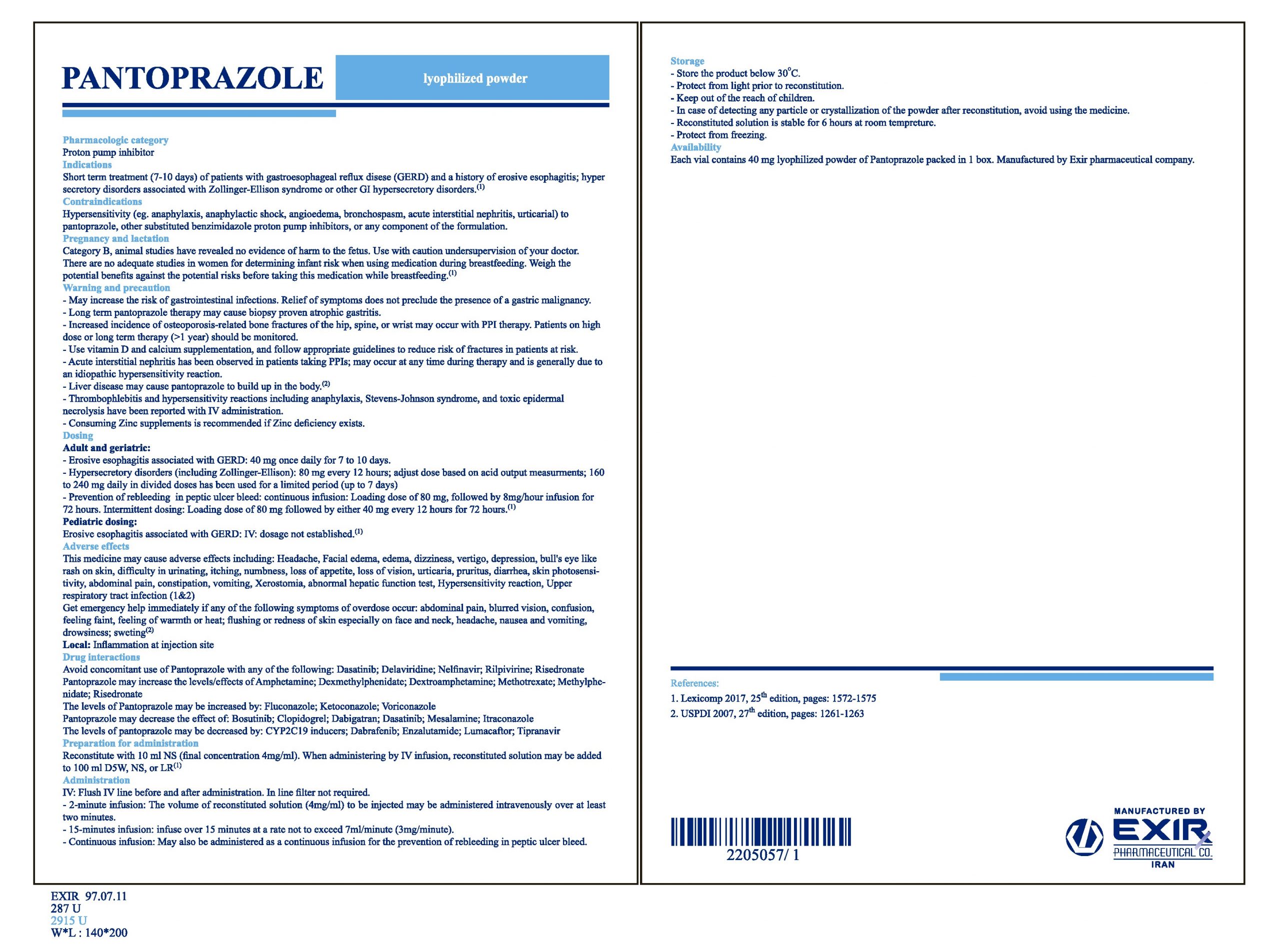PANTOPRAZOLE 20, 40-EXIR
E.C. tablet Pantoprazole 20, 40 mg

| Generic Name of Product | Brand Name | Dosage Form | Strength | Pharmacologic Group | Therapeutic Group | Unit Per Pack |
| Pantoprazole | - | Tablet/ vial | 40mg+20mg/40mg | Proton pump inhibitor | Gastrointestinal agents | 30 / 12 |
Indications And Usage |
Zollinger-Ellison-Syndrome and other pathological hypersecretory conditions. |
Administration | Adults and adolescents 12 years of age and above
Reflux oesophagitis One tablet of Pantoprazole per day. In individual cases the dose may be doubled (increase to 2 tablets Pantoprazole daily ) . especially when there has been no response to other treatme_ A 4-week period is usually required for the treatment of reflux oesophagitis If this is not sufficient, healing will usually be achieved within a further 4 weeks. Eradication of H. pylori in combination with two appropriate antibiotics : In H. pylori positive patients with gastric and duodenal ulcers, eradication of the germ by a combination therapy should be achieved Considerations should be given to official local guidance (e.g. national recommendations) regarding bacterial resistance and the appropriate use and prescription of antibacterial agents. Depending upon the resistance pattern, the following combinations can be recommended for the eradication of H. pylori :
+ twice daily 1000 mg amoxicillin
+ twice daily 500 mg clarithromycin
+ twice daily 400 - 500 mg metronidazole (or 500 mg tinidazole)
+ twice daily 250 - 500 mg clarithromycin
+ twice daily 1000 mg amoxicillin
+ twice daily 400 - 500 mg metronidazole (or 500 mg tinidazole) |
Contraindications | Hypersensitivity to the active substance, substituted benzimidazoles or to any of the excipients. |
Precautions | Gastric malignancySymptomatic response to pantoprazole may mask the symptoms of gastric malignancy and may delay diagnosis.In the presence of any alarm symptom (e. g. significant unintentional weight loss, recurrent vomiting, dysphagia, haematemesis, anaemia or melaena) and when gastric ulcer is suspected or present, malignancy should be excluded. |
Adverse Reactions | Dizziness, Visual impairment |
Pregnancy and lactation | Pregnancy: A moderate amount of data on pregnant women (between 300-1000 pregnancy outcomes) indicate no malformative or feto/ neonatal toxicity of Pantoprazole. As a precautionary measure, it is preferable to avoid the use of pantoprazole during pregnancy.
Lactation: Animal studies have shown excretion of pantoprazole in breast milk. There is insufficient information on the excretion of pantoprazole in human milk but excretion into human milk has been reported. A risk to the newborns/infants cannot be excluded. Therefore a decision on whether to discontinue breast-feeding or to discontinue/abstain from Pantoprazole therapy taking into account the benefit of breast- feeding to the child and the benefit of Pantoprazole therapy to women |
Renal and liver Impairment | Hepatic Impairment In patients with severe liver impairment, the liver enzymes should be monitored regularly during treatment with pantoprazole, particularly on long-term use. In the case of a rise of the liver enzymes, the treatment should be discontinued Patients with renal Impairment
No dose adjustment is necessary in patients with impaired renal function. Pantoprazole must not be used in combination treatment for eradication of H. pylori in patients with impaired renal function since currently no data are available on the efficacy and safety of Pantoprazole in combination treatment for these patients |
Laboratory Tests | - |

